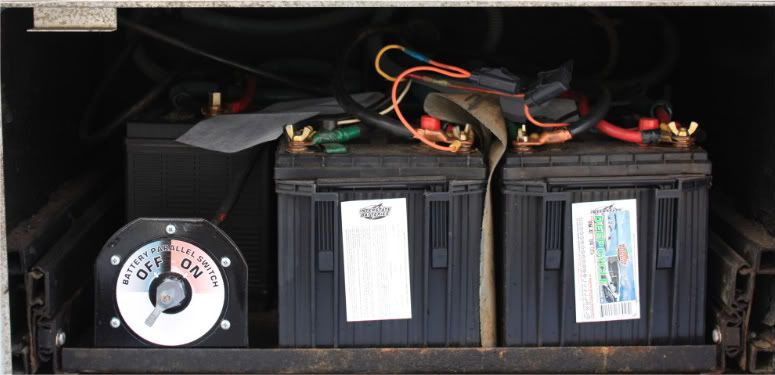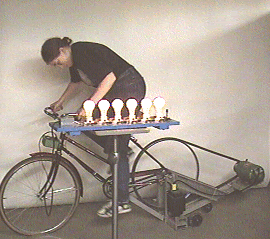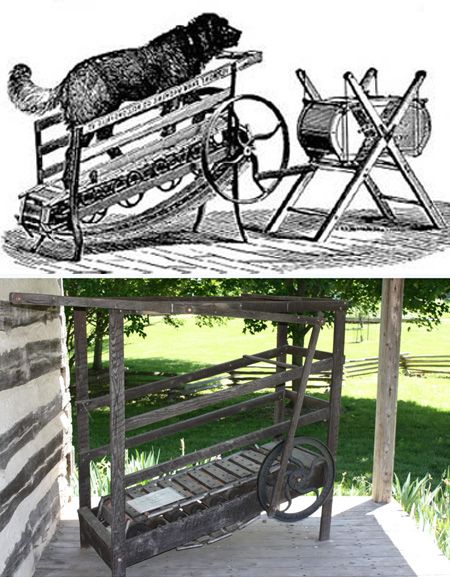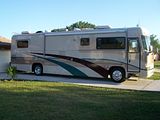Go to...  | Start A New Topic  | Search  | Notify  | Tools  | Reply To This Topic  |  |
 7/11 7/11 |
I am in the process of eliminating my isolator and installing a manual paralleling switch instead. In removing the wires from the isolator I came across this breaker wired between the isolator and the auxiliary start relay. 1. Do I need to incorporate it back into the new wiring? 2. With the installation of the battery paralleling switch, do I really need to keep the auxiliary start relay and associated wiring?   Tom & Jillene 1988 Regal 28' Chevy 454 8805-3538-28C-B3 | ||
|
| First Month Member |
You're doing a good thing by eliminating the diode isolator. Why just a manual paralleling switch? Have you considered a setup that would allow you to parallel the batteries whenever the engine was running (by sensing ignition) and the batteries would be isolated with the engine off unless you needed a manual override for extra ooooomph for engine starting? This system uses an interesting method of battery isolation and paralleling. The dash switch is an SPDT CO on-off-(on) It has three wires, with the momentary side getting power from the coach battery, the on side getting power from the ignition (or acc terminal of the ignition switch), and the center being the output to the coil of the paralleling relay. So..Start the engine with the switch in off. To attempt to charge the coach battery while driving, you move the switch to the on position, which ties the batteries together while the ignition is on. You would use the momentary position to tie the batteries together if the starting battery is low. The off position is used for normal starting or to charge the chassis battery only. If the switch gets its power from the acc terminal of the ignition switch, then it can be left in on for all normal use, as the acc terminal is usually not energized until the starter is released, but that would vary with ignition switch suppliers. The batteries are not paralleled when the ignition is off unless the switch is held in the momentary position. This system combines the function of the isolator and the paralleling solenoid without the reduced charging voltage of the isolator. And there are fewer parts and connections than a system with both an isolator and a paralleling relay. If the alternator fails, you can continue to drive with the switch in the ON position. The coach batteries will power the ignition, and the genset can be run to keep both coach and chassis batteries up. However, it does not address the issue of charging a low and a charged battery in parallel. Warning: Rant follows. I am not a fan of charging coach batteries by the engine alternator, particularly through an isolator. If I wanted to do engine charging, I would have a Perko make-before-break switch in the charging line to allow the alternator to see only the coach batteries and respond to their needs only. When the typical motor home with an isolator tries to charge both truck and coach batteries in parallel it responds to the highest battery and the result is a long slow charge for the lower batteries, which are usually the coach batteries. A heavier alternator never really gets to show its stuff in such a setup. This relay solution is simple, and the diode-induced voltage loss is eliminated. An isolator drops the charging voltage by around .7 volts, which can result in a sulfated battery with a short service life unless equalized or at least three-staged after the trip. Certainly, eliminating the isolator is a positive step, but batteries that are charged by an alternator and are not regularly equalized and/or desulfated do not last as long as batteries that are properly fussed over.vPlus, alternator charging is slow, and batteries like a vigorous charge now and then to desulfate and destratify. Of course, giving the coach batteries a nice three stage charge after a trip will extend their life, however they were charged on the trip. A charger with a desulfation and equalization feature will help a lot. I have liked the Vector 1095A for quite a while, now. I never parallel my batteries. The alternator charges the chassis battery, as God, Ulrich Zwingli and Charles Kettering intended, and the genset or solar panels charge the coach batteries. End of parallel charging and isolator rant. . 84 30T PeeThirty-Something, 502 powered | |||
|
 7/11 7/11 |
I am all for simplifying things. I have a charging issue that appears to be the isolator and the manual switch was suggested as a simple fix. I am also looking to remove some of the many wires entering the battery compartment. It seems the more I dig into this thing the more I am shaking my head at how some things are done. I don't think I will need to parallel the batteries much, I'm running on just one set now. I do believe I will have instances where I would need to use the altinator to charge the coach batteries, our state parks do not allow the use of generators. Your solution sound pretty simple. I might even have a switch to use. Thanks for the input. Tom & Jillene 1988 Regal 28' Chevy 454 8805-3538-28C-B3 | |||
|
| First Month Member |
Keep us posted on how that works out. Maybe you will have better results than I did.
Actually, I am speaking from the past. Things are even simpler, now. I have recently eliminated the chassis battery to make room for an additional pair of golf cart batteries in my slide-out tray. So, my batteries are always paralleled. All four start and all four power the coach. And, all four can run down and force me to Plan B, Plan C or Plan D or Plan E or Plan F or Plan G to get going again. In the unlikely event that I run them down, surely one of the Plans will work. But, I should probably cook up a low-voltage alert, just in case. . 84 30T PeeThirty-Something, 502 powered | |||
|
 7/11 7/11 |
I'm running everything off the coach batteries right now because the chassis side will not charge. So far it hasn't been an issue as I usually have shore power. I've only had the coach a couple months and haven't even turned on and tested the inverter yet. I figure I need to get the charging issue resolved first. Solar panels are certainly a thought for later. Tom & Jillene 1988 Regal 28' Chevy 454 8805-3538-28C-B3 | |||
|
Back in the early 90s I converted a GM4106 (35' bus) into a motor home. The coach had two 8D starting batteries and was a 12vdc coach. Anyway to get rolling quickly I wired all the new 12vdc coach circuits to the chassis batteries. This was suppose to be temporary but was still that way 12 years later when we sold it. Charging was done by a home made battery charger and the generator had it own small 12vdc battery for starting. If we ran the 8Ds down the generator would still start and that homemade charger would bring the 8Ds back to life in about 10 minutes. I had to replace the batteries about every 5 years ($200) at Sams. Never changed the generator starting battery. '92 Barth Breakaway - 30' 5.9 Cummins (6B) 300+ HP 2000 Allison Front entrance | ||||
|
| First Month Member |
Did the engine alternator do any of the charging when driving?
I am giving thought to taking the battery from my motorcycle on trips. It will probably start the genset. . 84 30T PeeThirty-Something, 502 powered | |||
|
"Host" of Barthmobile.com 1/19 1/19 |
I am not a fan of this setup... If your coach batteries were very weak, or even dead, and your house batteries were paralleled by sensing ignition, then technically, your house batteries could suck down your start battery enough to keep from starting. Or, if you are trying to parallel the good house batteries with the dead start batteries, where would the ignition source get its power to close the constant duty relay? For me, I do charge my house and coach batteries via manual paralleling switch. My coach and house batteries are always tied together via the manual switch when driving down the road or when plugged in. The only time I isolate my house and starter batteries is when I dry camp. The drawback is the inverter & charger. If being done this way, you must also switch off your 120v a/c to 12v d/c charger when you switch on your inverter... that is, if your charger doesn't sense that you're no longer plugged in to shore power via the automatic transfer switch. These automatic transfer switches hum, burn out and doesn't always work... My setup... Alt to start battery. No isolator and no constant duty solenoid. Just one manual paralleling switch to tie all of the batteries together when needed.  When is it really needed? Only when running the inverter while driving down the road. But now, you have to be smart doing this... you can not turn on your roof a/c or anything that draws excessive power on the 120 side. Also keep in mind, I have a household 120v fridge and I NEED an inverter or I NEED to run my generator when driving. For you Bill, that would be overkill. You are religious in watching your batteries and you have solar cells. And, in an emergency, you can always remove your alternator, hook up a belt to the rear tire/rim of your bicycle and pedal your ass off until you bring the voltage up on the start battery. But of course, you would probably just take your 12v cordless drill and use that instead. A 12v dc motor, like the heater/blower motor can also double as an unregulated generator in most cases.  
| |||||||||||||||
| ||||||||||||||||
 7/11 7/11 |
This is assuming your inverter feeds all the 120v? My inverter feeds a separate 120v panel limiting the circuits powered by the inverter. Right now the only things powered by the inverter are the kitchen, ice maker, blender and TV. (it was designed as a party coach) Tom & Jillene 1988 Regal 28' Chevy 454 8805-3538-28C-B3 | |||
|
"Host" of Barthmobile.com 1/19 1/19 |
Precisely. You have a sub panel... I don't. You're good to go then.
| |||||||||||||||
| ||||||||||||||||
| First Month Member |
That would not occur if the switch were in the off position.
A battery would have to be awfully dead to be unable to close the relay. But, yes, however unlikely, that could happen.
I ran mine that way for quite a while, without the switch. Just a short jumper available but seldom used. It was there to get me home if the alternator died and to power the fridge on long drives.
Well, with no television, we gotta watch something.
 Good idea, but since really BRIGHT LED lights became available, I no longer have the generator on the bike. Anyone remember the Raleigh Dynohub? Frictionless drive.
My batteries would sulk and pout if they were subjected to the indignities of unregulated charging.
 Great idea, but the drill needs to be capable of more than 12 volts to charge the batts. Mine is 18 volts, so perhaps a voltmeter mounted on the handlebars would allow me to keep my pedaling cadence just right to provide 14.8 volts. Interestingly enough, as a child, we had no electricity on the farm. There was a bank of batteries for the radio (and a few dim bulbs) in the basement charged by a Wincharger, which was an automotive generator with a propeller........ I wonder if my dad would have hooked up my bicycle to help out on windless days if he had thought of it. We also had a butter churn powered by a dog on a treadmill. The dog always tried to hide when he saw it being set up. . 84 30T PeeThirty-Something, 502 powered | |||
|
"Host" of Barthmobile.com 1/19 1/19 |
 
| |||||||||||||||
| ||||||||||||||||
to reply to Bill's question. Yes the engine alternator was used on the road. 250 amps could recharge the house/coach batteries in a hurry. The ac charger was used when parked and plugged in. '92 Barth Breakaway - 30' 5.9 Cummins (6B) 300+ HP 2000 Allison Front entrance | ||||
|
 4/11 4/11 |
My starting batteries would go dead after a week. This was due to old batteries and some bad connections. I put a trickle connection between the house batteries and the starting batteries. It simply takes the house batteries which are at 13.4 volts when the genset is running or plugged into shore power and transfers it to the starting batteries which would be below that voltage. When the voltage is equal the charging stops or if the house batteries are lower than the starting batteries there is no current flow. I think it is a simple diode but don't know it is in a sealed box. Seems to work fine. Tom Loughney Barthless.... | |||
|
| First Month Member |
One of the reasons I don't like alternator charging is that all my GM alternators are designed to reduce their output as they heat up. This works out pretty well for their intended purpose, that of replacing energy used for starting, but doesn't do well for extended charging of a larger battery bank. I don't think a standard Delcotron is the ideal alternator for RVs. However, all is well, as my Barth has solar, and like a Harley Davidson, it only goes out when the sun is shining. You did know that Harleys are solar-powered, didn't you? The engine is just for noise so the narcissistic rider will be noticed and admired. Or so the more sociopathic rider can annoy those sensitive ears. . 84 30T PeeThirty-Something, 502 powered | |||
|
| Powered by Social Strata |
| Please Wait. Your request is being processed... |
|
This website is dedicated to the Barth Custom Coach, their owners and those who admire this American made, quality crafted, motor coach.
We are committed to the history, preservation and restoration of the Barth Custom Coach.
We are committed to the history, preservation and restoration of the Barth Custom Coach.



